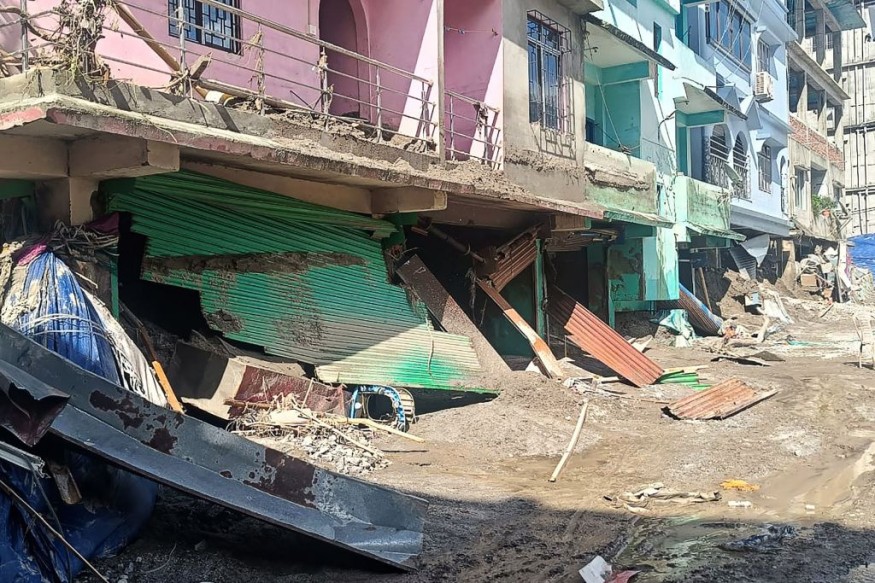
Officials reported that the ice-cold floodwaters that surged through mountain communities in India's Himalayan northeast killed at least 40 people and left hundreds still missing, with rescuers still searching for survivors among wreckage and fast-flowing water.
The disaster began in the early hours of Wednesday when a glacial mountain lake overflowed.
It blasted through a large hydroelectric dam downstream before pouring into the valley below, killing dozens and forcing thousands more to leave their homes.
Aftermath of the Flood
The Sikkim State Disaster Management Authority said that more than 2,000 people were rescued following the deadly floods and that state authorities set up 26 assistance camps for more than 22,000 flood victims.
Rescue teams were still looking for nearly 100 people who had gone missing, including 22 soldiers.
Vinay Bhushan Pathak, the state's top bureaucrat, said 26 people were transported to hospitals with injuries, and almost 3,000 tourists, as well as 700 cab drivers, were stuck in flood-affected districts.
"We are evacuating them through helicopters provided by the army and the air force," he said.
Floodwaters wiped away eleven bridges in the Lachan Valley, as well as pipelines, and damaged or destroyed more than 270 buildings in four districts.
Several towns in the Teesta basin, including Dikchu and Rangpo, were inundated, and schools in four districts were ordered closed until Sunday, according to the state's education administration.
Parts of a highway connecting the state capital of Sikkim to the rest of the country were also washed away.
According to images released by the Indian military, the floods also struck several army barracks, burying vehicles in feet of mud.
The office of Prime Minister Narendra Modi stated that the government would assist state authorities in the aftermath of the flooding.
Lake Labelled Highly Vulnerable
The cause of the catastrophic flood, the latest to hit northeast India in a year of unusually heavy monsoon rains, was unknown. Experts cited heavy rain and a 6.2-magnitude earthquake that shook adjacent Nepal on Tuesday afternoon as potential causes.
However, the incident highlights a climate dilemma that sets local environmental activists, who believe dams in the Himalayas are too dangerous, against government officials seeking a national green energy strategy.
The Teesta 3 dam, the largest in Sikkim state, has been a source of controversy since its construction six years ago.
According to a 2019 report published by the Sikkim State Disaster Management Authority, Lhonak Lake is "highly vulnerable" to flooding that could burst dams and cause substantial damage to life and property.
Rising temperatures have caused glaciers to melt quicker, increasing the likelihood of dam breaches and catastrophic floods, yet India has relied on such dams to meet ambitious renewable energy targets as part of a worldwide effort to slow climate change.
The government wanted to cut India's hydroelectric dam output in half by 2030, to 70,000 megawatts.
It has approved the construction of hundreds of new hydroelectric dams throughout the Himalayan region.
"We knew that this was coming," said Gyatso Lepcha, general secretary of Affected Citizens of Teesta, an environmental organization based in Sikkim.
The Teesta 3 hydroelectric project on the Teesta River took nine years to complete and cost $US1.5 billion ($2.6 billion).
The plant commenced operations in 2017 and was capable of producing 1,200 megawatts of electricity-enough to power 1.5 million Indian homes.
Related Article : Northeast India Deadly Flooding: 5 Dead While 23 Remained Missing
Related Video:
© 2025 NatureWorldNews.com All rights reserved. Do not reproduce without permission.





